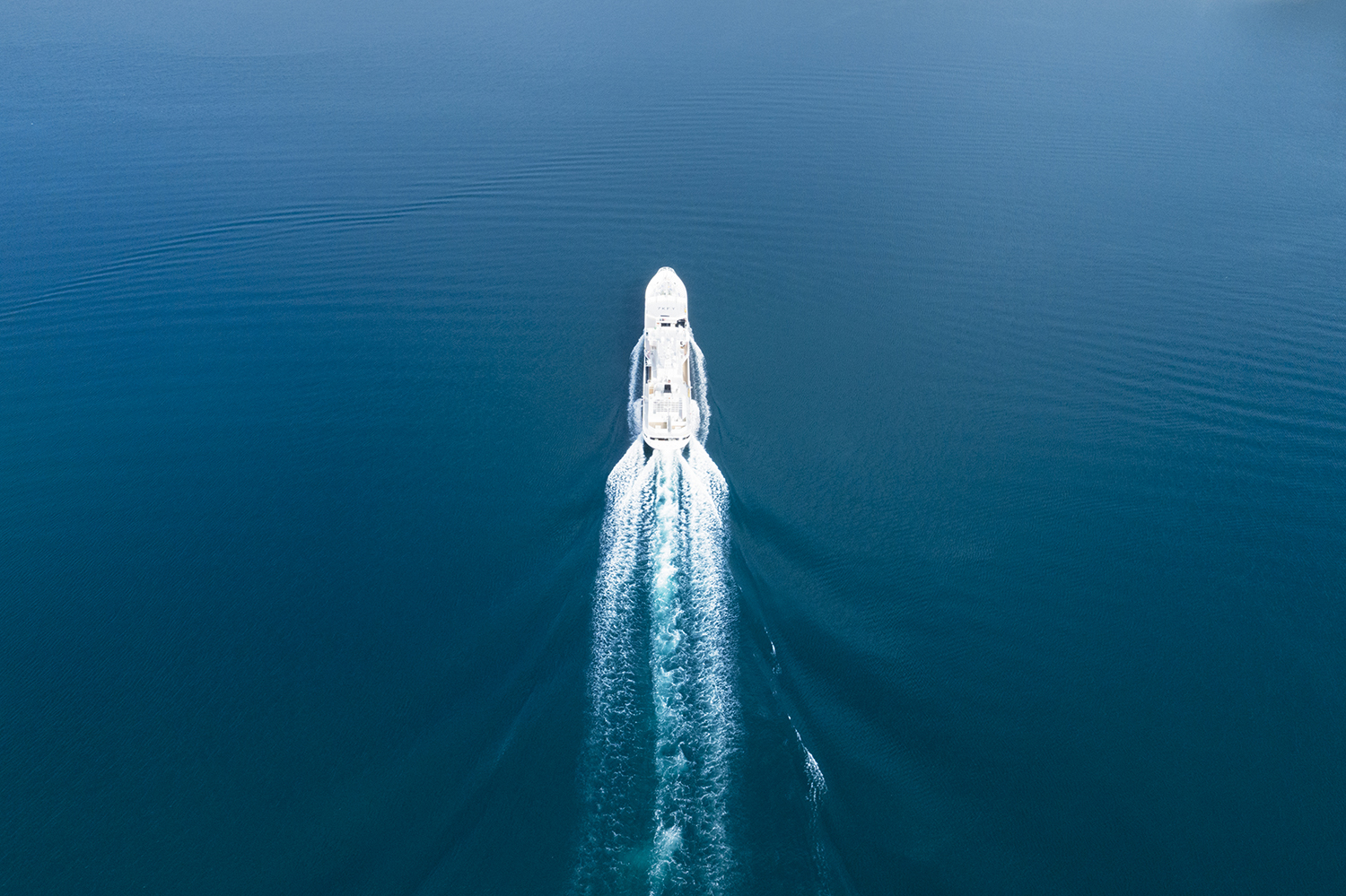works
Shofukumaru 1
for USUFUKUHONTEN co., ltd.
Jun.2020 / Miyagi, Japan
The interior and exterior design of the “Dai-ichi Shofuku Maru,” a deep-sea tuna longline fishing boat operated by Usufuku Honten in Kesennuma, Miyagi Prefecture. The ship has a gross weight of 486 tons and is manned by a crew of 23; and will spend about ten months at sea catching bigeye and Pacific bluefin tuna. During this time, the crew works very hard and deals with a lot of mental and physical stress. It is said that the turnover rate among young fishermen is generally over 50%. Therefore, we sought to design a fishing boat that would alleviate this stress to the extent possible while attracting young people at the same time.
For the exterior design, we wanted to fully leverage the ship’s inherently beautiful form, so we decided to apply a linear pattern to emphasize the curved surface of the hull. We deconstructed Usufuku’s trade name, “Chigaiyama Hoshi Ichi,” and reconstructed it into a graphic pattern that evokes a subtle sense of “wa” (harmony, peace). This pattern is used in various ways, such as on the flooring of the ship’s interior, to unify the feel of the exterior and interior. The design of the interior also utilizes “straight lines.” This design concept was born from the assumption that people are not accustomed to living at sea for long periods; accordingly, by creating an environment in which they are surrounded by many straight lines, such as those associated with buildings, windows, doors, and smartphone and TV screens, it would remind them of life on land and lead to a sense of security. While retaining the required curved surfaces to ensure safety, striped joints and linear openings are used as much as possible. At the same time, even though the lighting is linear, indirect lighting is used to provide a sense of calmness and security. Another key point was to figure out how to create diversity. Functionally specialized environments, such as those in hospitals, tend to be homogenous spaces, which can cause psychological stress.
Accordingly, we thought we could keep the crew from getting bored by ensuring each place in the ship had its own personality, which we could achieve by placing the patterns, stripes, materials, etc., mentioned earlier in a somewhat random manner. The final accent design was a “sense of weightiness.” To have the crew forget that they were always floating, if only for a little, we made the table tops thicker than usual and shaped the stools like stumps, giving the furniture design a sense of weight as if it were rooted to the ground. In this way, we aimed to provide a design incorporating a sense of security that comes with land through the three keywords of “straight lines,” “diversity,” and “weightiness.”
Finally, the Dai-ichi Shofuku Maru is the first Japanese tuna fishing vessel equipped with a Wifi system. It also has higher ceilings than conventional ship interiors and offers a larger per-person occupancy area, including larger beds. Additionally, various functional improvements have been made, such as the installation of slopes that allow the tuna to slide smoothly to the fish hold, while the overall design has been laid out in a manner intended to reduce the physical and psychological burden on the crew as much as possible.












Project member
Photographer
Takumi Ota
* The accomplishment of onndo




